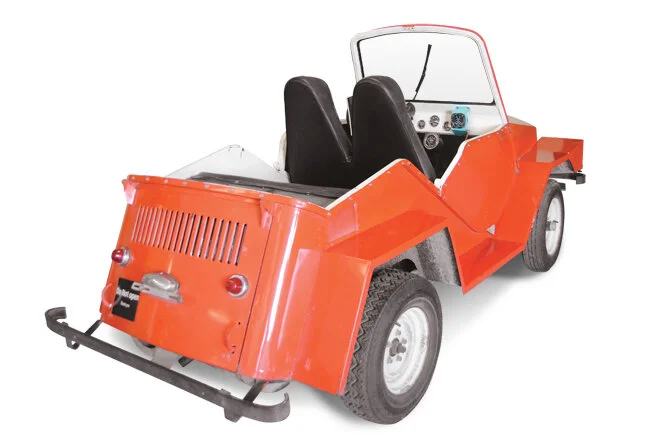The Stearman Runabout
/Stearman (www.OldCarsWeekly.com)
In America the overlap between the makers of cars and of airplanes has been small but meaningful. Henry Ford financed the tri-motor Tin Goose, one of the first transcontinental airliners, and for a few years in the late 80s Chrysler owned executive jet maker, Gulfstream. Going the other way, Beech Aircraft developed the first ever gas-electric hybrid automobile as early as 1946. The car’s technological wizardry, however, caused its price tag to soar higher than a Beechcraft airplane on a sunny day. And then there was Stearman Aircraft Corporation, who took a more modest approach to getting around on the ground.
Stearman began building airplanes in Wichita, KS in 1927. By 1934, industry consolidation had turned it into a subsidiary of much larger Boeing. That same year Stearman introduced the Kaydet airplane. Even though the design was nearly obsolete – a bi-plane with fabric covered wooden wings and a radial engine – the Kaydet was forgiving to fly and sturdy as hell. Thus it saw widespread service as a trainer plane for U.S. armed forces in the lead up to WW2. By the time production ended in 1944, Stearman had built nearly 10,000 Kaydets. Some of them even found their way into the air forces of China, Chile, Venezuela and the Philippines. Several are still in service today as crop dusters.
Stearman Kaydet (www.Boeing.com)
The Kaydet airplane was probably the company’s best known product. Its Ieast known was the Stearman runabout. In 1970 Stearman began exploring possible business opportunities outside of aviation. One of these was a simple, light weight, inexpensive “around town” vehicle called the… well, they never got around to giving it a name. This sporty little car/truck/thingy had an all steel body with a snap on top. It could seat two people, plus a couple of small kids, dogs or golf bags. Motivation was provided by a 2-cylinder 20hp Kohler engine that sent power to the rear wheels via a planetary transmission and chain drive. Acceleration and top speed numbers are not known, but they are unlikely to have been scintillating.
Stearman (www.OldCarsWeekly.com)
The look? Well, this little moke conjures up the image of a strange love child, the product of a steamy summer night out in the barn with a Volkswagen Thing, a Craftsman lawn tractor, a 12-pack of 30 weight and some hazy memories.
During 2+ years of evaluation, the aircraft maker built at least three of these machines before the project was grounded. One Stearman survives. Many thanks to Phil Skinner for his piece that appeared in Old Car Weekly magazine. Without it, we’d probably have never heard of this nifty looking little car. Nor would we know that one of them still exists, residing at the Kansas Aviation Museum outside Wichita.
Copyright@2020 by Mal Pearson
Sources
Old Car Weekly, January 9, 2020. Stearman Survivor, by Phil Skinner
www.Boeing.com



